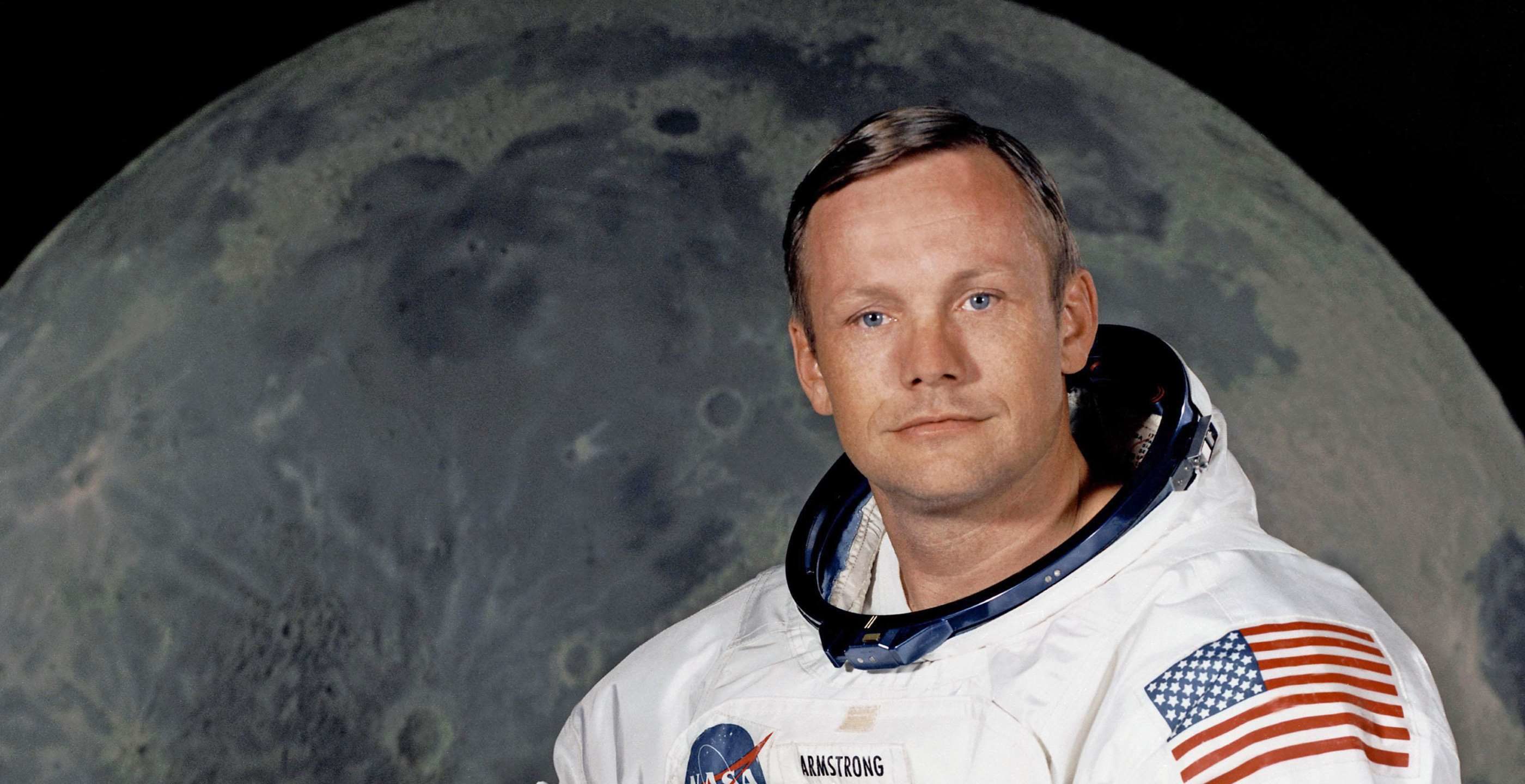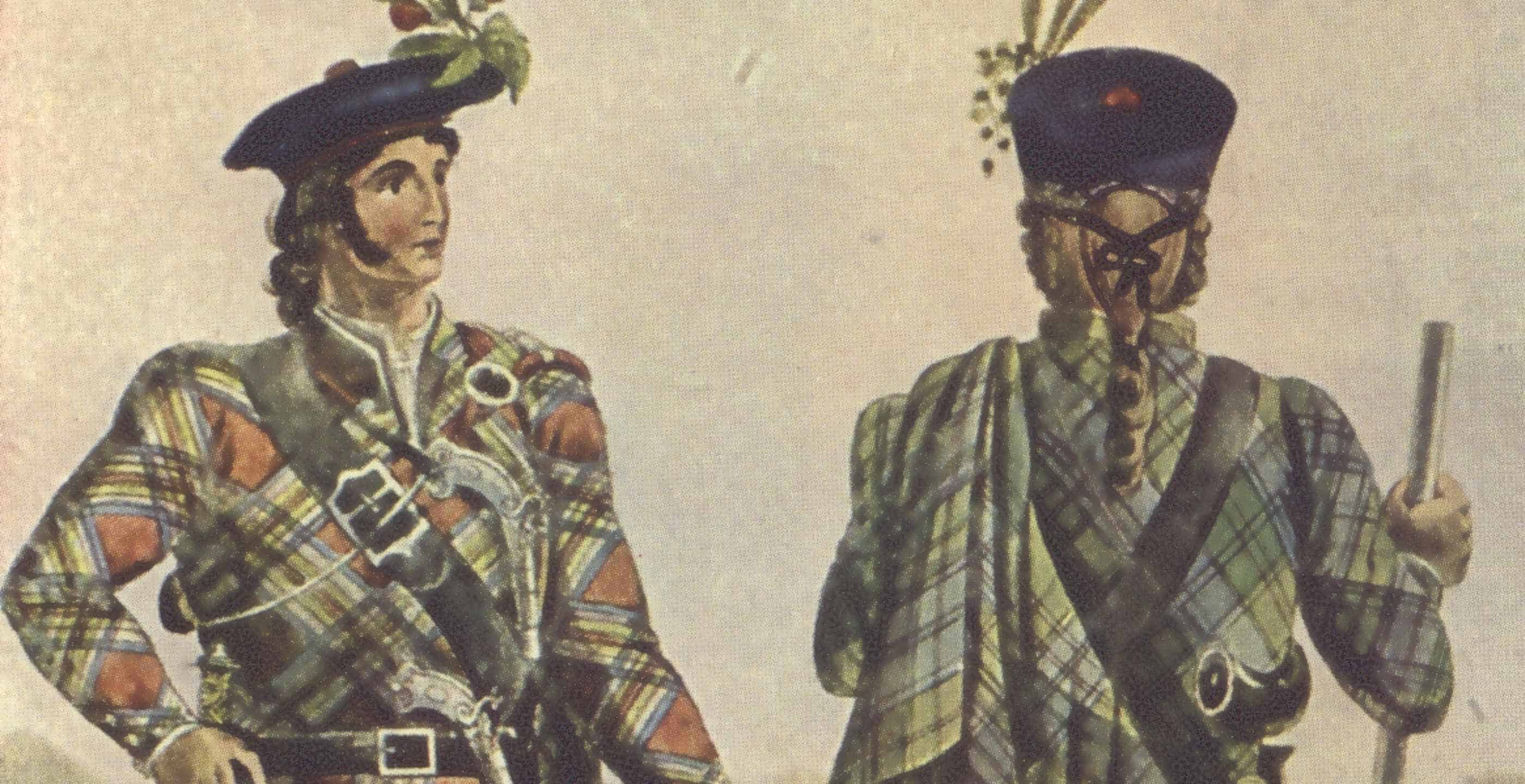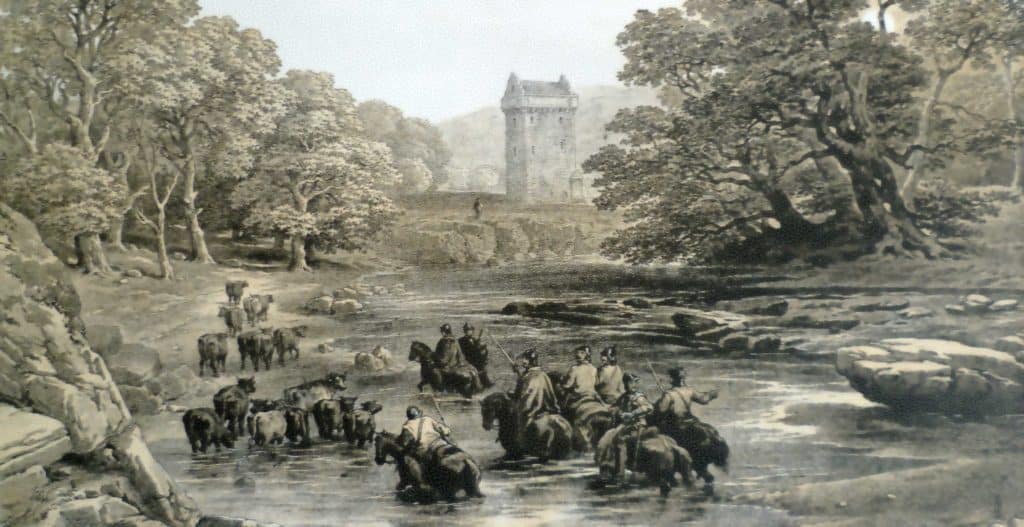Astonishing though it is to those of us who remember being allowed to stay up and witness the event on television, on 21st July 2019 it will be 50 years since the first moon landing. Neil Armstrong stepped out of the lunar module with the words “One small step for man, one giant leap for mankind” and entered the history books as the ultimate highflyer.
While the world celebrated, one town in Scotland regarded Armstrong’s achievement as a personal success story. Langholm, the Muckle Toon, may be small in size but its heart is mighty, and for generations the Armstrong family has played a pre-eminent role in its story.
Even today, the visitor strolling along Langholm High Street will encounter folk who bear the famous reiving names of Armstrong, Elliot, Johnstone, Irvine, Maxwell, Beattie and many more. Fortunately, these descendants of the fierce warlords of the Anglo-Scottish border now celebrate their ancestry through their sharp wit and passion for rugby and the Langholm Common Riding, rather than raiding the neighbours.
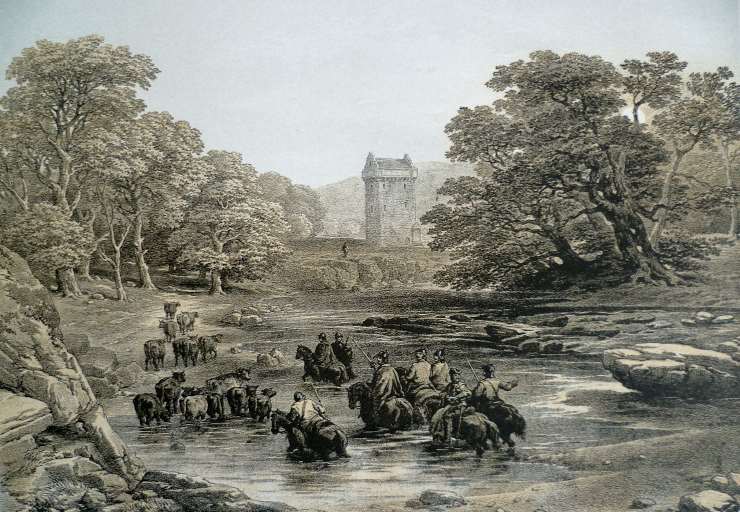
The most famous of Neil Armstrong’s forebears was undoubtedly the powerful and wealthy Johnnie Armstrong of Gilnockie Tower, which stands between Langholm and Canonbie. Like most successful men along the border, Johnnie most likely made his fortune through a combination of fair means and foul, sometimes acting in an official or semi-official capacity for the crowns of either England or Scotland – and sometimes for both! In fact, Johnnie was a little too rich and successful for the young King James V of Scotland, who drew him to his doom at Carlenrigg in Teviotdale to the north-east of Langholm.
Dressed in their best and mounted on the finest horses, Johnnie and his men were greeted by the king with the cutting comment: “What wants yon knave that a king might lack?” The king was accompanied by a vast force of soldiers, which far outnumbered the reivers. Johnnie appealed to the king for the lives of himself and his men but his pleas were rejected. When he realised what was happening, he spoke out bitterly: “I am a fool to ask for grace from a graceless face”. Johnnie and his men were all hanged.
In 1969, local people were still discussing and singing ballads about the complex and often acrimonious relationship between authority and the border reivers, just as they do today. However, all that had become part of a much bigger historical picture. The first man on the moon was an Armstrong!
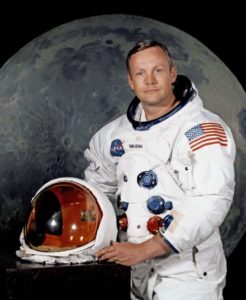
The germ of a plan to invite Neil Armstrong to Langholm probably began almost as soon as he was chosen as commander of the Apollo 11 moon mission. It was clear that “the Moon Man”, as he is known to this day in the town, was the obvious choice to be Langholm’s first created Freeman. This invitation was duly extended to him and he accepted.
Eddie Armstrong, Langholm’s Town Clerk, and Grace Brown, Depute Town Clerk, headed the team organising the ceremony during which Neil Armstrong would receive the vellum scroll awarding him the freedom of the town. It was more than a ceremony; it was a homecoming.
In March 1972, Neil Armstrong arrived in Edinburgh to present the prestigious Mountbatten Lecture. From Edinburgh he travelled to Langholm and was overwhelmed by the warmth of the welcome that awaited him there. Grace Brown recalls that the biggest available building was the Parish Church of Langholm, but it was still not big enough to accommodate everyone who wanted to attend.
As a mill town, Langholm’s speciality at the time was quality woollen cloth. A unique Lunar Tartan was created for the occasion, a subtle blend of charcoals, browns and light greys to represent the lunar surface, with red running through to indicate the flames of the rocket. Langholm is a musical town too and a piper wrote a tune to celebrate the occasion: Commander Neil Armstrong’s Moonstep.
Pipe bands marched while the Muckle Toon was packed with people all hoping to get a glimpse of the Moon Man, or even better, an autograph. One young lad stood in the street with a placard round his neck that announced: “My name is Neil Armstrong”. The international press gathered in the Muckle Toon and Armstrong’s visit was the cue for much hilarity among reporters over an obscure law which said that any Armstrong entering the town was to be hanged, by order of the king.
Neil Armstrong and his wife Janet were taken from the Town Hall to the Parish Church in a carriage drawn by grey horses. There, in a warm and emotional ceremony, he was awarded the Freedom of Langholm, the town’s first (and only, to date) Freeman.
In the church, Armstrong took the oath of allegiance to the town. It was clearly a moving moment for Armstrong himself, for in the film taken during the ceremony he says, in a voice filled with feeling: “It is said that the most difficult place to be recognised is one’s home town; and I consider this now my home town”. These words have probably taken on greater fame in Langholm than his celebrated words uttered just after landing on the moon!
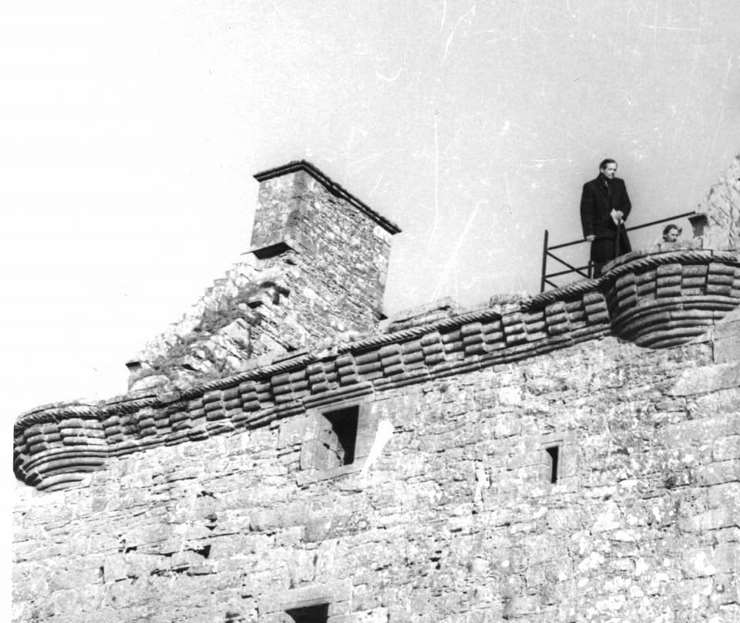
The scroll that awarded Armstrong his freedom was presented to him in a wooden model of Gilnockie Tower, the home of Johnnie Armstrong. Neil Armstrong had the opportunity to visit the tower while in Langholm and he ascended the spiral staircase to look out across the borderlands from the walkway that encircled the tower, just as earlier Armstrongs had done during troubled times on the border.
At the time of his visit, Gilnockie Tower was an abandoned ruin, its roof gone and its interior floors in a collapsed state. Today, Gilnockie has been repaired and is a visitor centre welcoming people from all over the world. The walkway has been secured, so that once more visitors can stand where both the reiver Johnnie Armstrong and Neil Armstrong the Moon Man stood to survey the borderlands.
Johnnie the warlord, would be ever on the lookout for threats to his security, while the plaque that Armstrong placed on the surface of the moon promoted a different message. It read: “We came in peace for all mankind”.
This year, a series of special events in Langholm and at Gilnockie Tower will celebrate the 50th anniversary of the moon landing, in recognition of the Armstrong who rode to the moon and made it safe hame again. “Safe oot, safe in”, as the Common Riding saying has it, for this famous freeman of Langholm!
Miriam Bibby BA MPhil FSA Scot is a historian, Egyptologist and archaeologist with a special interest in equine history. Miriam has worked as a museum curator, university academic, editor and heritage management consultant. She is currently completing her PhD at the University of Glasgow.
